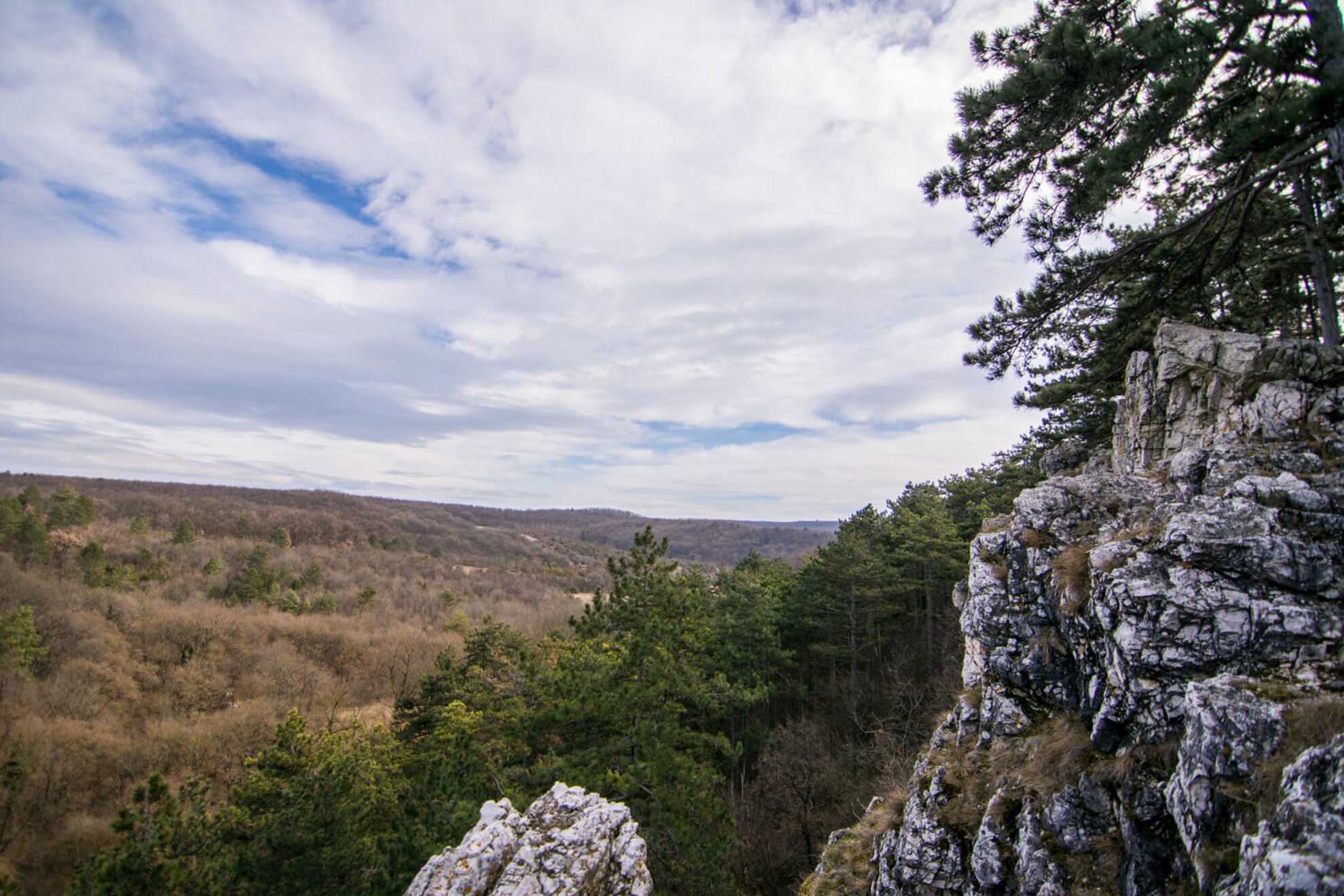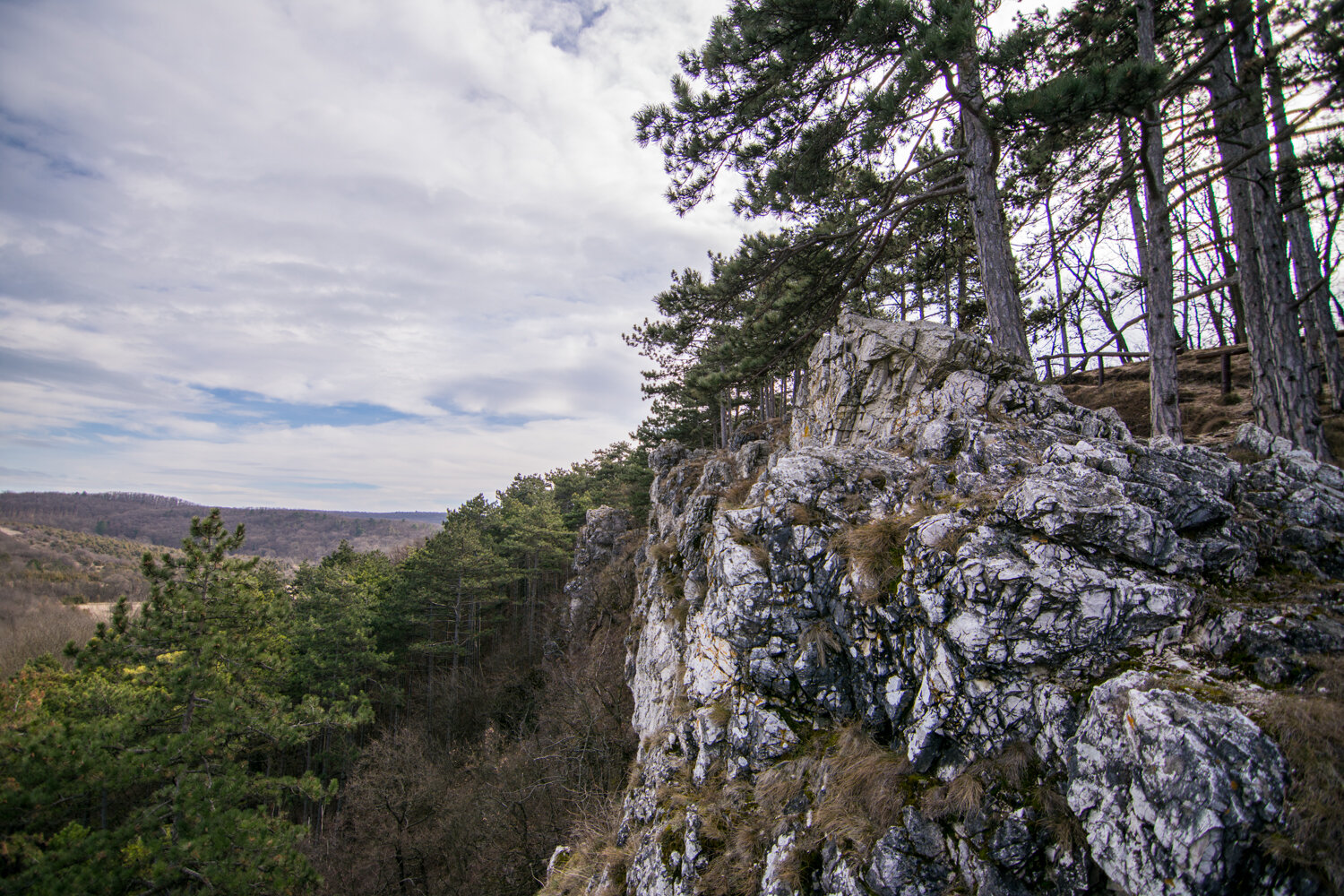The whole thing started out as a shorter trip that even a small child could do. We pictured nice roads, benches, and a high stand lookout, but the reality looked quite different. Even though we did find benches and nice roads, we didn’t stumble upon a lookout tower.
We started our trip from Koloska-völgyi Wildlife Park, only 4 kilometers away from the center of Balatonfüred; visiting the park is free of charge in every season. The weather was very kind as it was probably the first sunny day of March.
We didn’t see a soul in the park and in the surrounding area – we had the entire Balatonfüred forest for ourselves. This deserted atmosphere felt both scary and uplifting. We headed to the Koloska-völgy excursion forest, which, according to the maps is only a 10 minutes-long walk away through the park. We intended this trip to be suitable for families, so we took our imaginary child with us. Thus the 10 minutes become more like 30, and we haven’t even seen a thing from the park and the area.
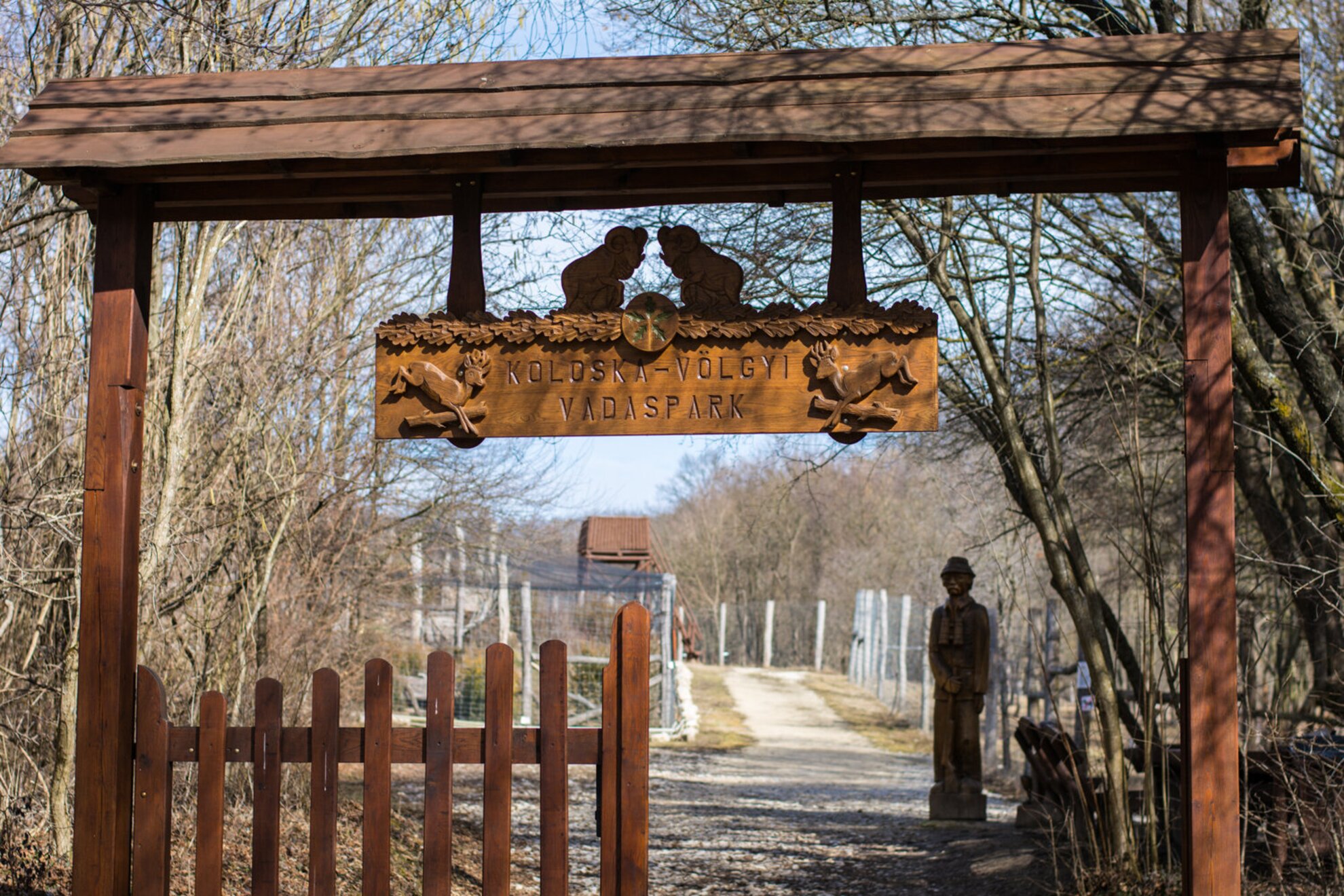
We discovered the first high stand right at the entrance; we can see the animals – that are tame, by the way – of the wildlife park from up there. We can see peacefully sleeping mouflons, nimble deer, pretty teals, quails, and pheasants from there. There’s a bit more commotion at the next enclosure: fallow deer wander around in the shade of trees. Our route leads left from the entrance, between the fallow and red deer enclosures, and here we can finally see the leader of the reds. The stag, with its huge antlers keeps its harem of 5-6 safe.
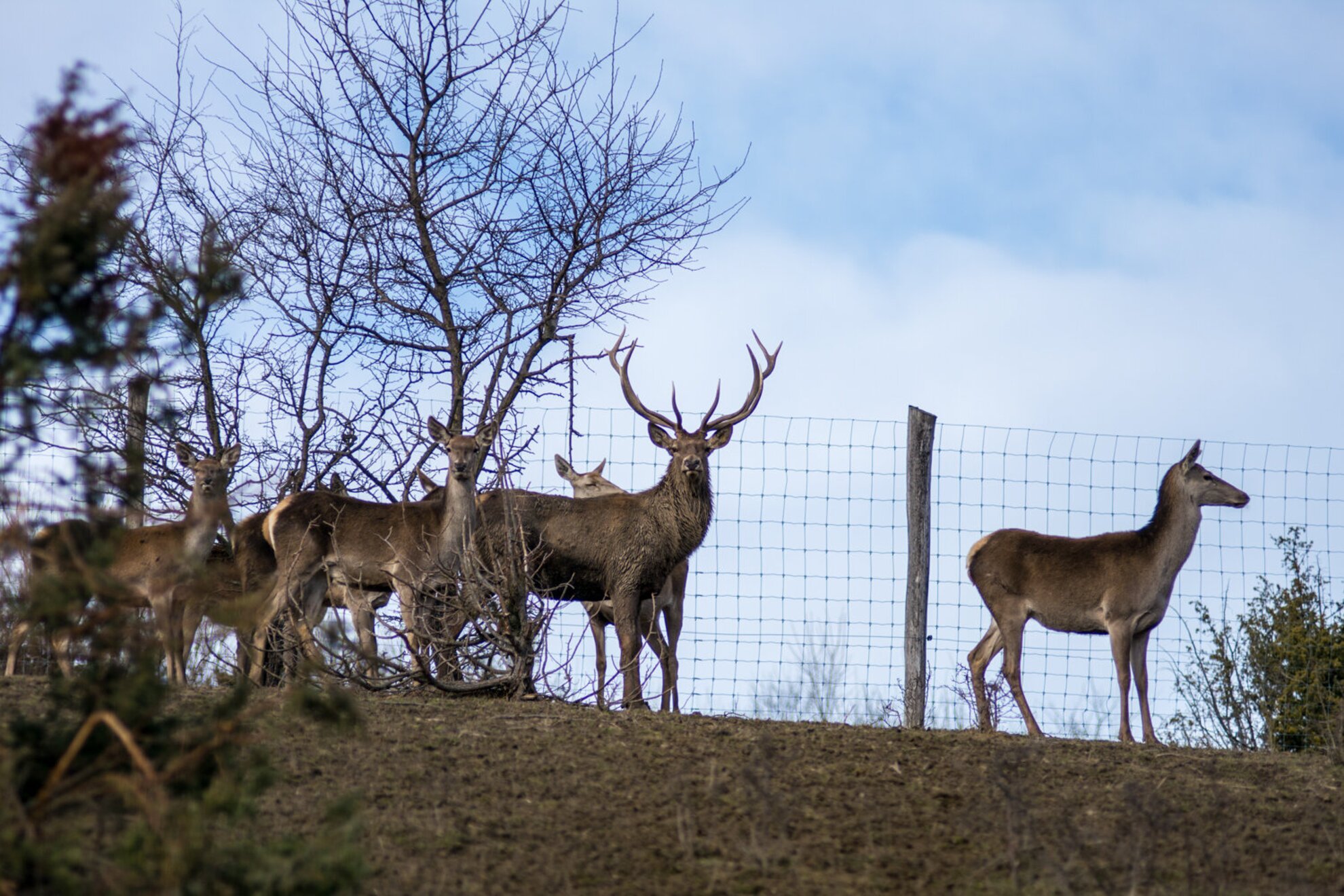
The deer are a bit troubled – who knows when was the last time they saw humans? We approach the fence slowly, while the deer are retreating in the same pace. But then, a miracle happens: with a sniff to the air, one of the hinds bravely runs towards me. Puzzled, I look at our photographer, and then the moment loses its wonder: there’s a freshly peeled banana in his hands, which explains the acts of the deer… The other, less brave or simply better fed companions look at the renitent hind astounded – and, more importantly, they remain motionless.
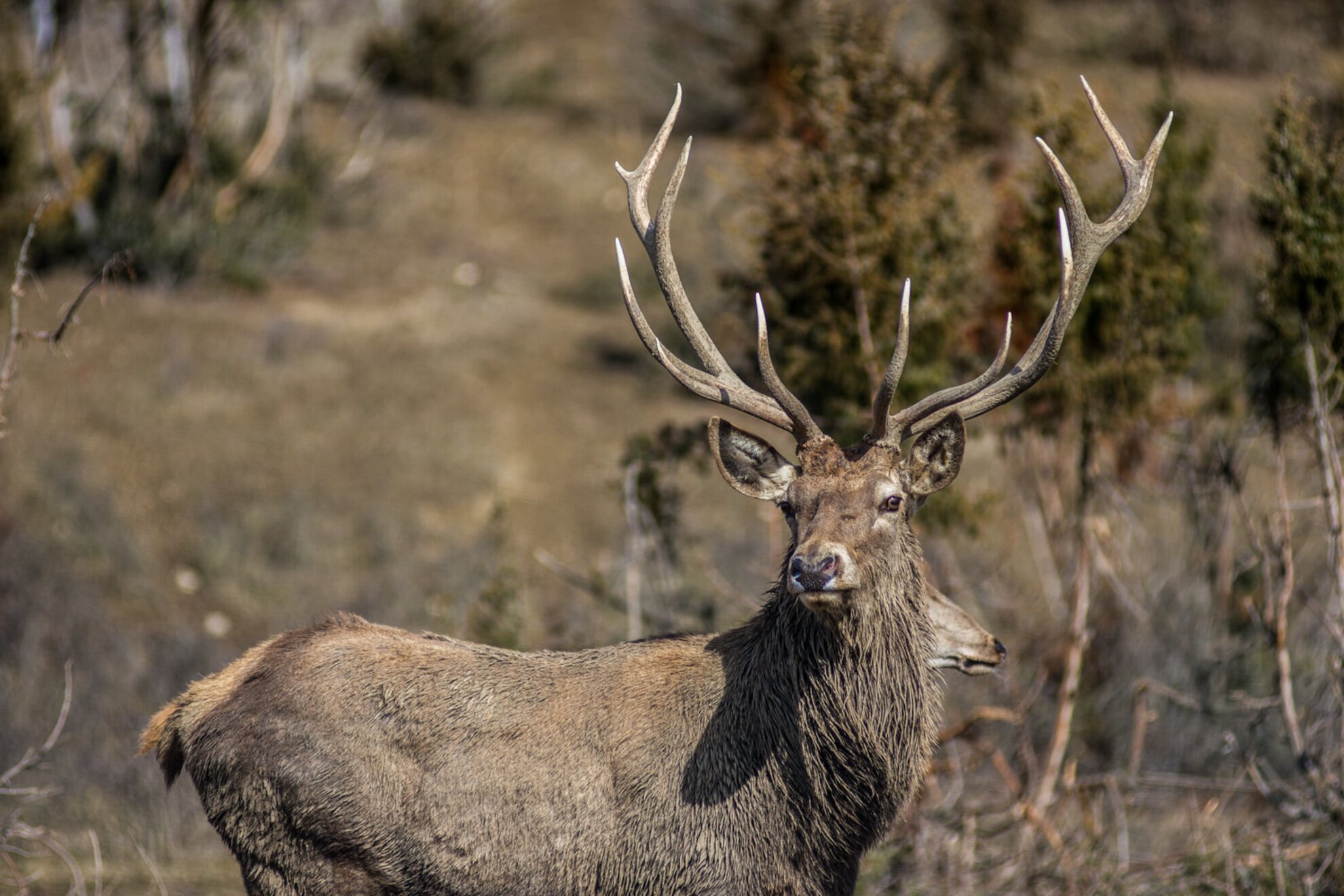
Our imaginary child is already pulling on our hands impatiently, so we start walking towards the tiny wooden bridge at the end of the road that goes between the two enclosures: we cross over the currently non-existent creek and see the first board pointing towards the well-beaten path. We are on a tiny plateau that is surrounded by the wildlife park on the right, and by low bushes with a forest behind them on the left. We can clearly see Koloska-völgy in front of us, while on the left, beyond the bushes, we can spot Sándor Hill, and on the right, beyond the wildlife park, the outlines of Kereszt Hill can be seen.
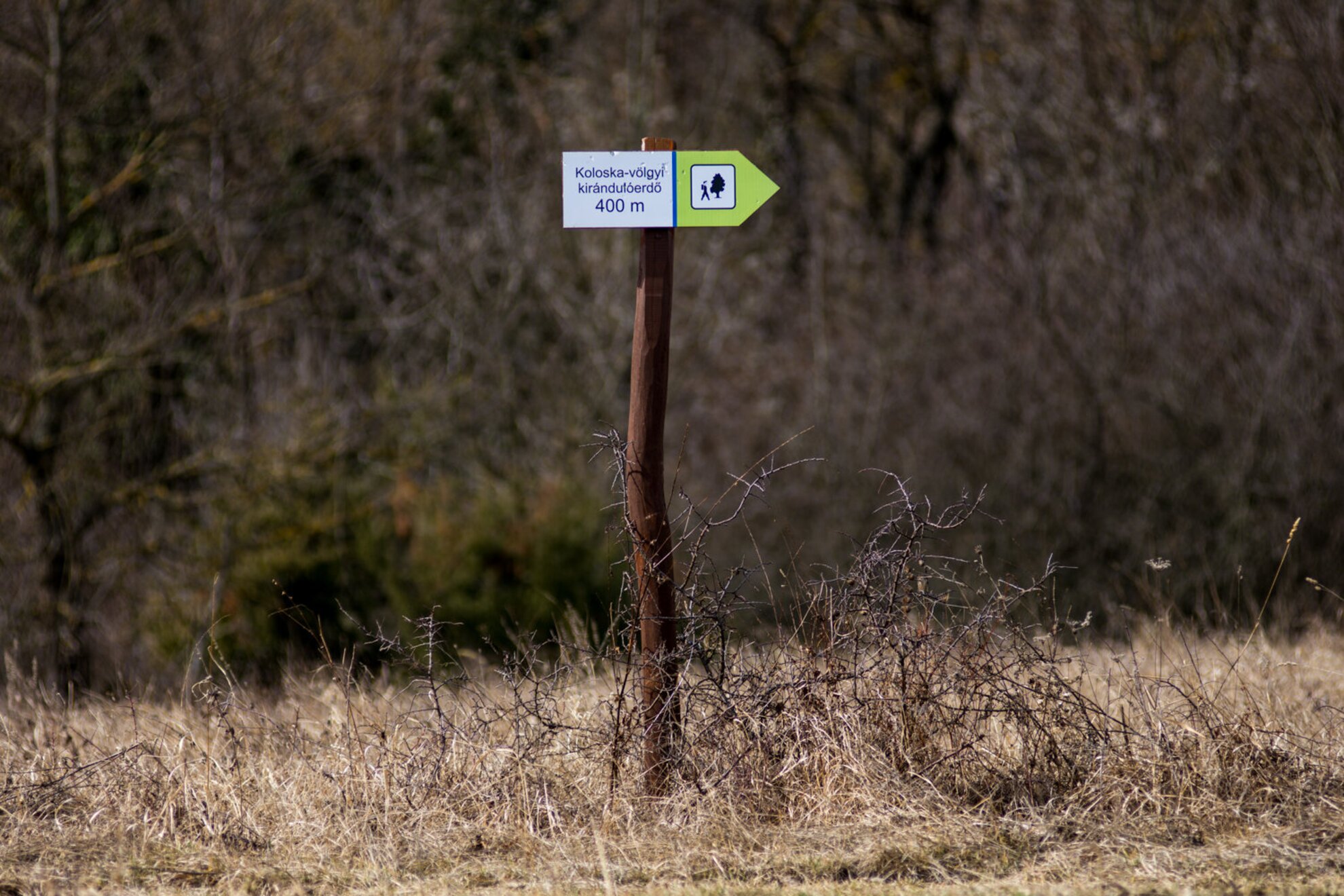
We feel like partisans on the run here, who are trying to connect with their comrades hiding in the hills. Unconsciously, we try to make ourselves look smaller in order to be less obvious targets to the snipers that are surely hiding in the forest… And since we are outlaws, we decide to find the lookout in the excursion forest, the one that's on the map, but we haven’t found yet.
After about 2-300 meters, a sign pointing to the left tells us where to find the excursion forest. Leaving the path behind, we arrive to a concrete road; Koloska Spring is only about a 100 meters away from here, and those who arrive by car can reach it easily on this road. According to the tourist office in Füred, the well above the spring gives drinkable water, but, since the peak season isn’t here yet and the well has been winterized, we can’t try it. Instead, we took pictures of the mallard that was prancing around in the mini-lake at the base of the well, and who, was probably trying to distract us from the hen that was hiding on the shore of the lake.
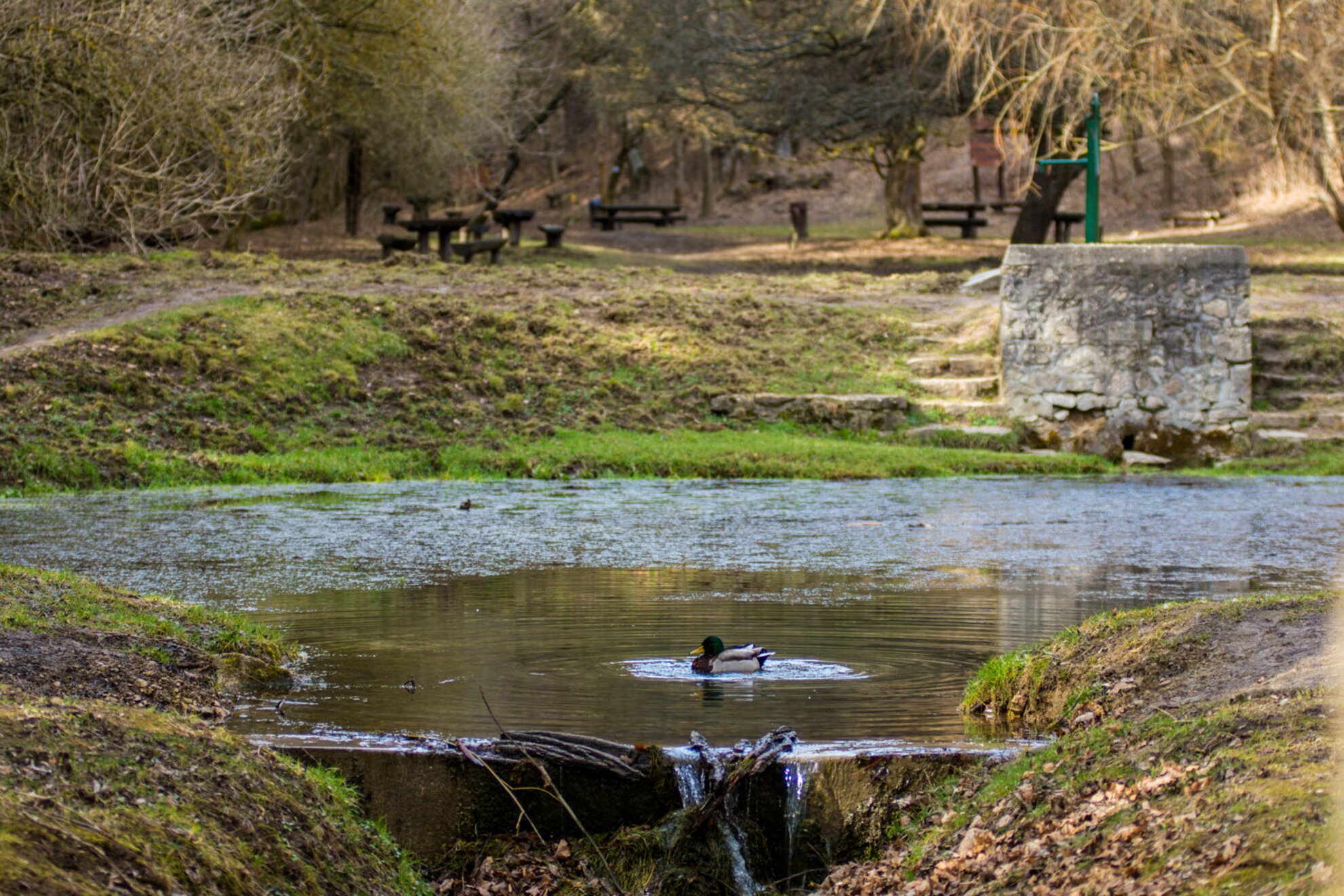
The spring is located in the excursion forest, and it’s also the starting point of the study trail that presents the local animal species and geological features. However, that wasn't our destination, as we were headed to the lookout, which we can find by leaving the well and turning left. We hope to discover our partisan comrades there.
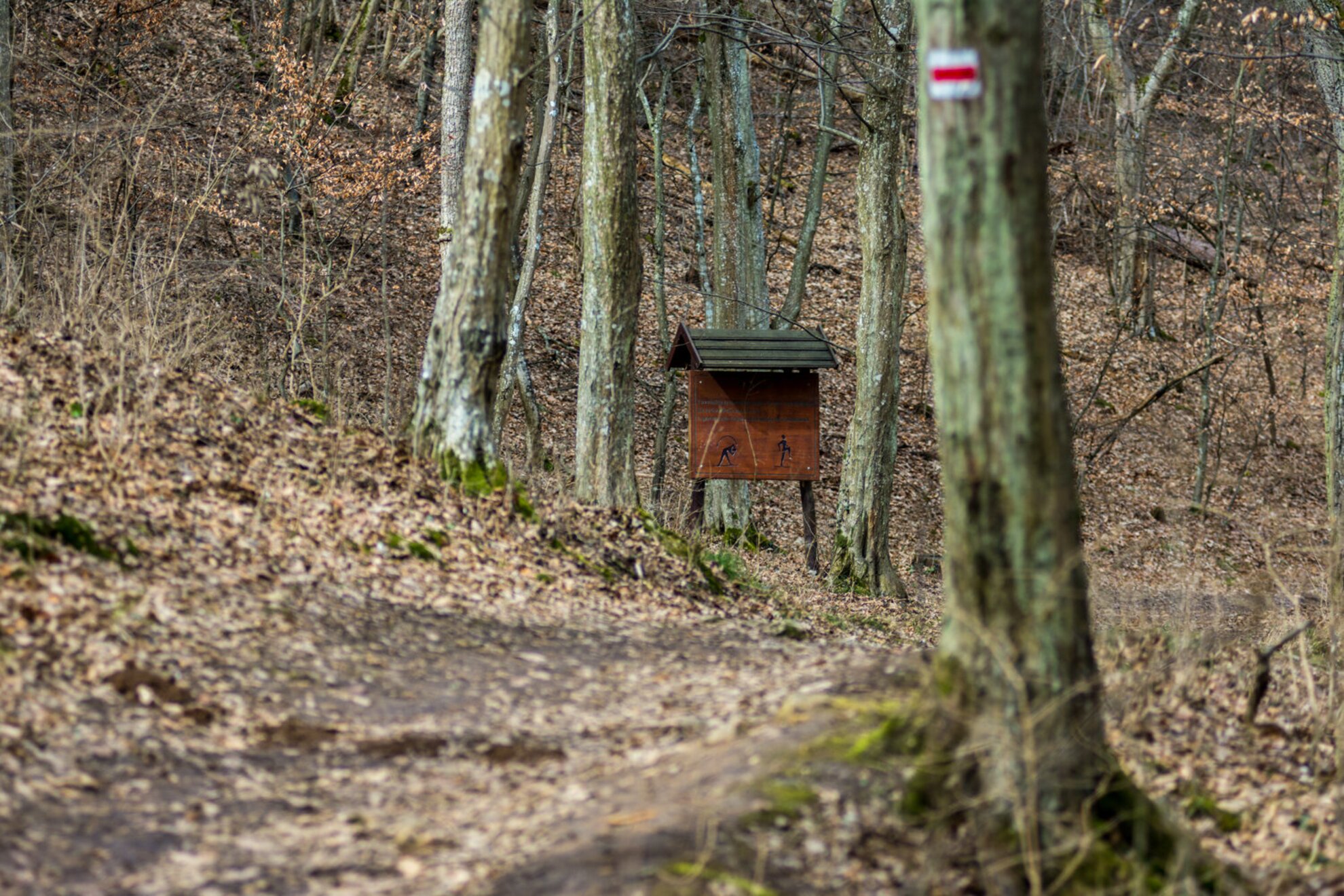
There’re 15-20 meters tall cliffs here, with a wooden railing indicating that there’s a passable path up there. And it’s true; we spot well-built wooden stairs on the hillside, going up like a serpentine: it looks safe, but it’s damp, so it’s better to be careful on a rainy day, as it could be quite slippery. There’s hardly any railing.
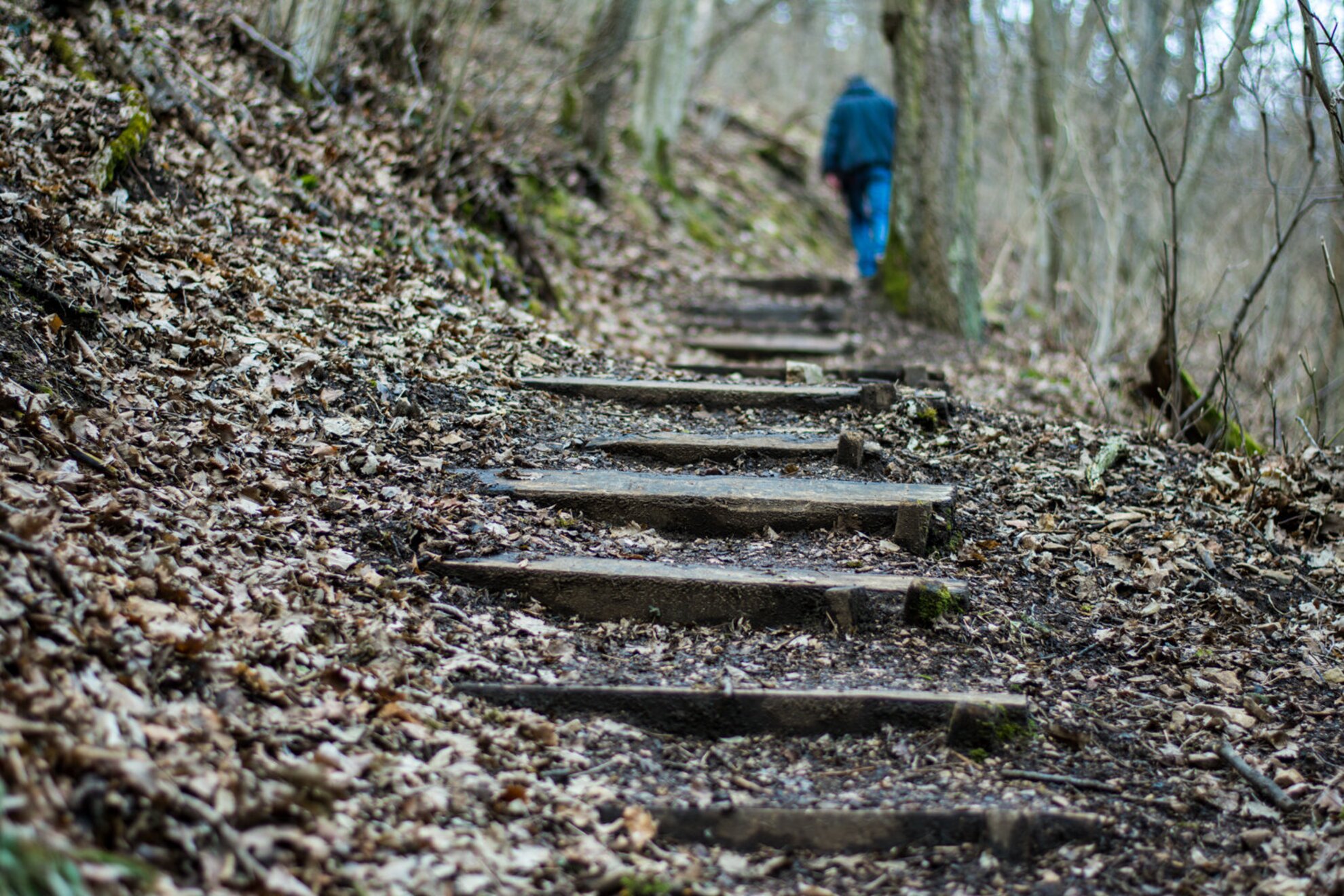
We can’t see the lookout, but by following the red triangle sign, we reach the top of the cliffs, and realize that the lookout is “only” an observation post surrounded by railing, named Koloska-szikla (“Koloska Cliff”), which is 50 meters tall.
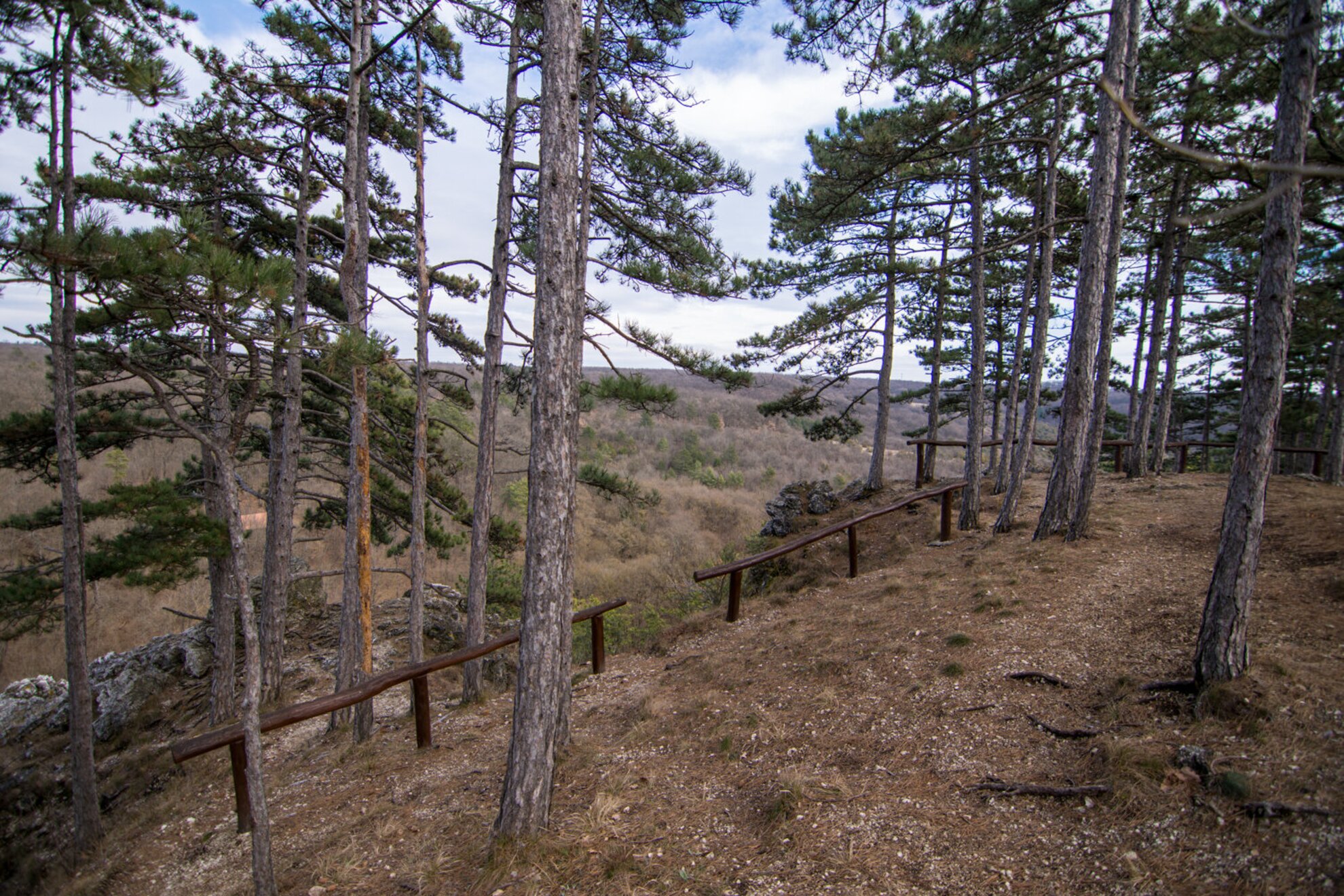
Although we didn’t find the lookout, we aren’t disappointed: leaning over the railing, we see the valley and the bushy plateau. We climb back down the valley recharged by this view, and down there we decide to give up our partisan action and study the map more thoroughly next time, so that we won’t look for something that isn’t there.
